Table of Contents
Cooling Fan Running Full Speed After Turning Engine On: Case Study in Mercedes-Benz CLA 45s (M139 Engine)
When a cooling fan runs at full speed immediately after starting the engine, it can be both alarming and frustrating for Mercedes owners. While the cooling fan is designed to regulate engine temperature, operating continuously at maximum speed usually signals an underlying fault.
In this case study, we examine a real-world incident involving a Mercedes-Benz CLA 45s W118 equipped with the M139 engine. The article covers the customer complaint, workshop diagnostics, fault code analysis, inspection findings, repair process, and final resolution. Along the way, we’ll highlight best practices for troubleshooting similar issues.
Customer Complaint
A customer brought in their CLA 45s AMG with a complaint:
- – Cooling fan running at full speed immediately after engine start.
- – When the engine was switched off, the fan stopped operating.
- – The constant high-speed fan operation during runtime raised concerns about battery load, noise, and potential cooling system failure.
This unusual fan behavior required a thorough diagnosis.
Workshop Findings
1. Fault Code Diagnosis
Using a diagnostic tool, technicians ran a quick test. The system displayed the following fault code:
- – P2B837A – The RPM of component “Coolant Pump” is too high, suggesting possible leakage or defective sealing.
This fault code provided the first clue that the problem was linked to the cooling circuit.

2. Cooling Circuit Inspection
To confirm, the workshop carried out a complete cooling system inspection.
- – Visual inspection: No external coolant leaks were visible around hoses, joints, or the expansion tank.
- – Bleeding the coolant system: The cooling circuit was bled to remove any trapped air pockets.
- – Actual value analysis: When compared with a reference vehicle, the medium-temperature coolant circuit showed significant deviations in sensor readings.
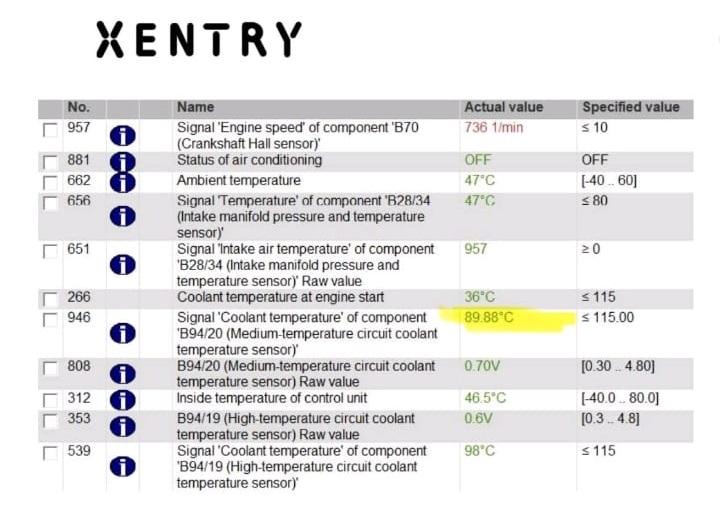
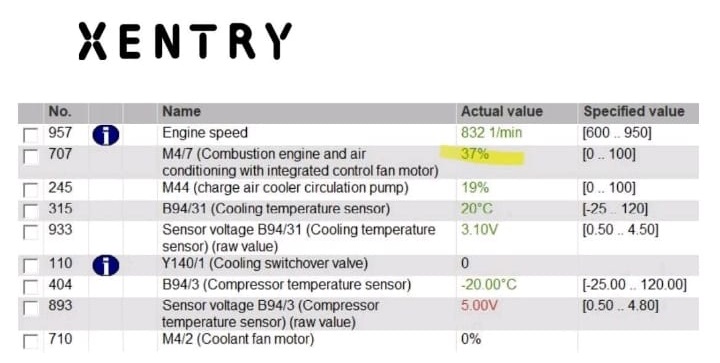
3. Sensor Swap
To eliminate the possibility of a sensor malfunction, technicians swapped the medium-temperature sensor with a tested working unit. However, the warning and fan issue persisted, confirming that the sensor was not the root cause.
Measurements and Observations
To narrow down the fault, detailed electrical and thermal measurements were taken.
Electrical Checks
Coolant Pump (M44):
- – Supply Voltage: 12.7 V
- – LIN Bus Communication: 8.6–9.4 V
- – Ground: Clean, no corrosion or short circuits.
Extra Fan (M4/7):
- – Supply Voltage: 12.9 V
- – LIN Bus Communication: 8.6–9.4 V
- – Ground: Clean, no corrosion or short circuits.
The results confirmed stable power supply and communication, ruling out wiring or voltage faults.

Thermostat Check
The thermostat installed in the vehicle was stamped 83°C, indicating that it should open at that temperature.
- – Actual value reading: The medium-temperature coolant circuit reached 89.88°C.
- – At this threshold, the extra fan (M4/7) immediately ramped up to 100% speed.
This mismatch between thermostat rating and actual temperature was forcing the fan into maximum operation.
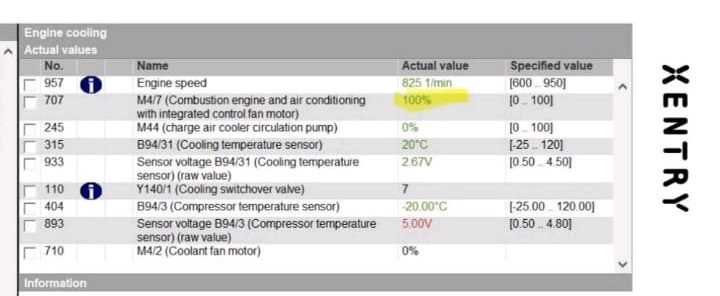
Can a Bad Relay Cause the Fan to Stay On?
Yes. In general, a faulty fan relay can cause continuous operation.
- – The relay acts as an electrical switch, controlling power to the cooling fan.
- – If stuck in the “closed” position, it supplies constant voltage, forcing the fan to run at full speed regardless of engine needs.
Although in this case the relay was not the culprit, checking the relay is always an essential diagnostic step when facing persistent fan activity.
Resolution Steps
After confirming the thermostat was likely at fault, technicians opted for a replacement.
Thermostat Replacement
- – The original thermostat (83°C) was removed.
- – A new thermostat stamped 73°C was installed.
This lower-temperature thermostat allowed coolant to circulate sooner, preventing overheating of the medium-temperature circuit.

Post-Replacement Results
After replacement, the system was retested with the following results:
- 1. Medium-temperature coolant circuit max temperature: 76.25°C
- 2. Extra fan (M4/7) operation: Reduced to ~37% at observed temperatures (normal range).
- 3. Cooling fan full-speed issue: Completely resolved.
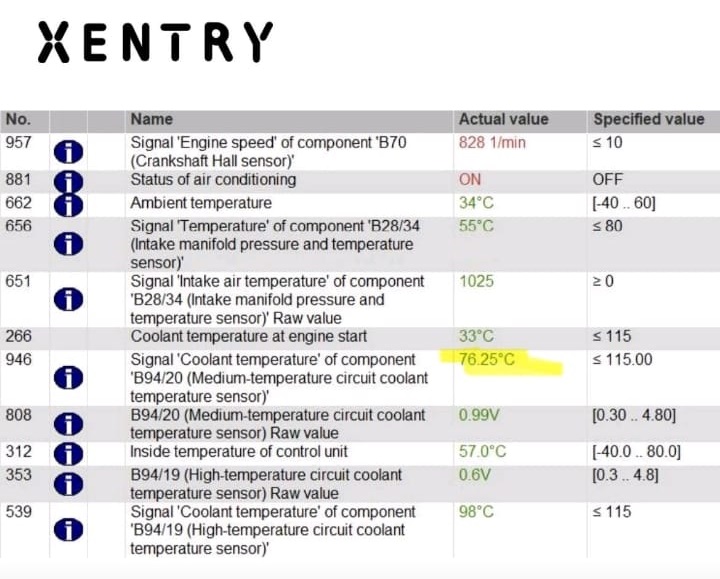
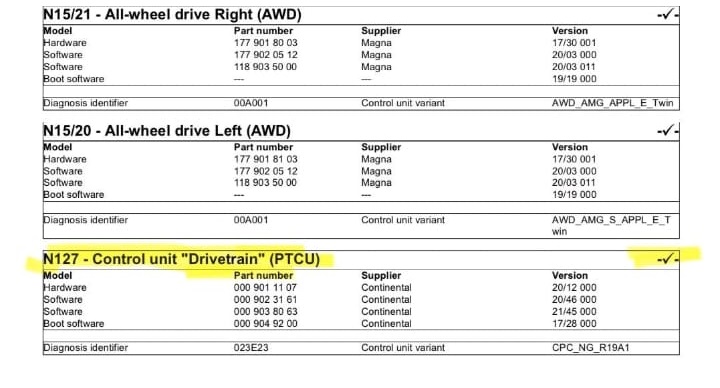
Preventive Tips for Mercedes Owners
To avoid fan-related issues and overheating problems:
- – Check coolant levels regularly A low coolant level stresses the thermostat and fan.
- – Use only Mercedes-approved coolant Prevents corrosion and sensor malfunctions.
- – Replace thermostats and water pumps at recommended intervals Prevents late-opening thermostats and circulation issues.
- – Listen for unusual fan behavior Persistent high-speed operation is an early warning sign.
- – Schedule regular diagnostics Professional scans help detect hidden faults before they cause failures.
Conclusion
The issue of the cooling fan running at full speed after engine start in a Mercedes-Benz CLA 45s W118 with the M139 engine was resolved by replacing the thermostat with a lower-temperature (73°C) unit.
This solution corrected coolant circulation, restored accurate temperature regulation, and reduced fan workload from 100% to normal operating levels.
The case highlights the importance of:
- – Thorough diagnostic testing.
- – Validating sensors and electrical circuits.
- – Recognizing the thermostat’s vital role in cooling system performance.
For Mercedes owners and technicians alike, this serves as a reminder: if your fan is running at maximum speed, the problem is not always electrical thermostat calibration can be the hidden culprit.
More Mercedes Cooling System Resources
Want to explore more causes, symptoms, and repair tips for coolant leaks, overheating, and contamination?
Learn more about Mercedes cooling system faults in our full Cooling System Guide.
FAQ – Cooling Fan Running Full Speed After Turning Engine On
1) Why does my Mercedes cooling fan run at full speed after I start the engine?
This usually indicates a problem with the cooling system. Causes include a thermostat opening too late, faulty coolant pump, incorrect temperature readings, or a stuck fan relay. The fan runs at maximum to protect the engine from overheating.
2) Can a bad relay cause the cooling fan to stay on?
Yes. A faulty relay can get stuck in the closed position, continuously supplying power to the fan even when cooling isn’t required. This is why relay inspection is always part of the diagnostic process.
3) How do you diagnose a cooling fan running at full speed?
Start by scanning for fault codes (like P2B837A). Inspect coolant levels, thermostat, pump, and wiring. Check voltage supply and LIN bus communication to the fan. Finally, test or swap sensors to confirm accurate readings.
4) How was the CLA 45s case resolved?
The original 83°C thermostat was replaced with a 73°C thermostat. This allowed coolant to circulate earlier, reducing maximum circuit temperatures and lowering fan workload from 100% to around 37%.
5) Is it safe to drive with the fan running full speed?
It may prevent overheating temporarily, but constant high-speed operation can wear out the fan motor and signal deeper cooling system problems. It’s best to have the vehicle inspected before continuing to drive.
Author
Written by: Mercedes Expert
Automotive Technical Trainer & Mercedes-Benz Diagnostic Specialist
With years of hands-on experience repairing and diagnosing Mercedes-Benz vehicles, specializes in case-study-based troubleshooting guides that blend workshop accuracy with educational clarity.
Last Updated: August 2025

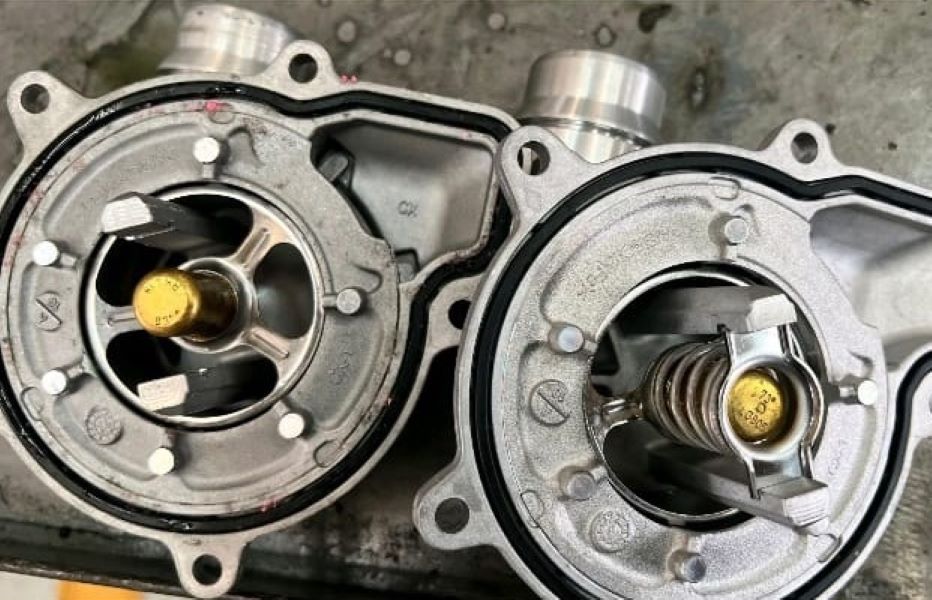

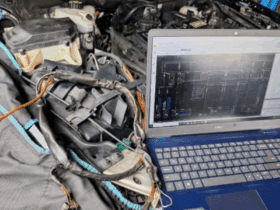
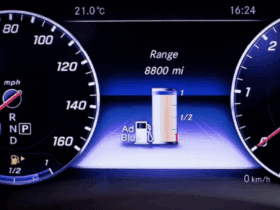
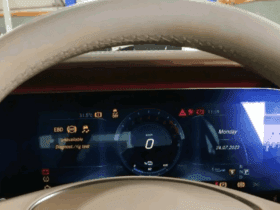
Leave a Reply